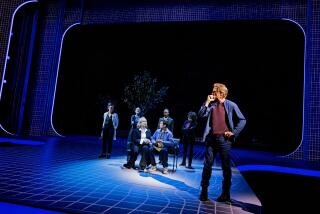Review: Matthew Bourne shifts ‘Romeo and Juliet’ into an asylum for maximum menace
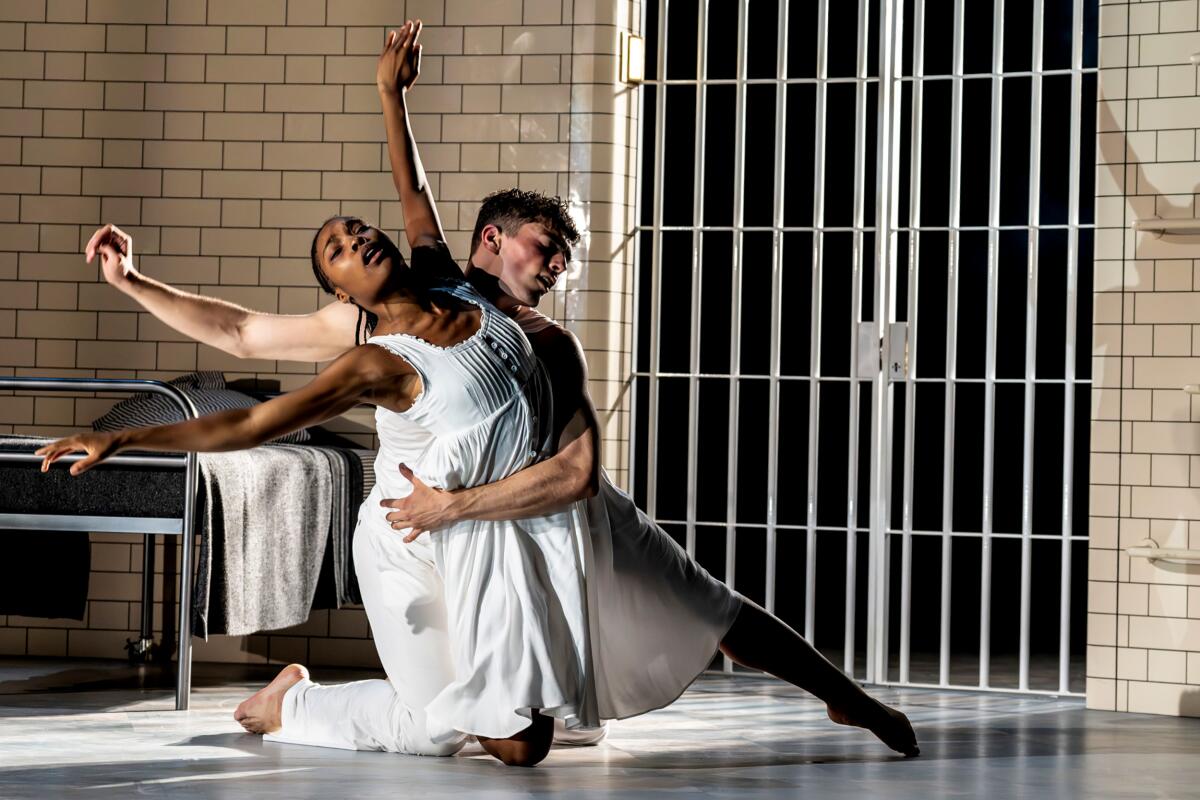
Choreographer Matthew Bourne transposes Shakespeare’s “Romeo and Juliet” to an asylum for young people. Ostensibly disturbed, the inhabitants of the Verona Institute seem normal enough, if perhaps understandably forlorn for having been discarded by parents who didn’t want to deal with their challenges.
The youngsters sulk, stomp and scamper, pull pranks and horse around. Eluding authority is a game — a dangerous one. They are united in their experience of oppression and their longing for justice, as seen in the way they quickly come to one another’s defense.
In short, they’re like adolescents anywhere, wild at heart and vulnerable beyond their comprehension. At the mercy of their hormones, they find that doing what comes naturally only makes the adults clamp down on them harder.
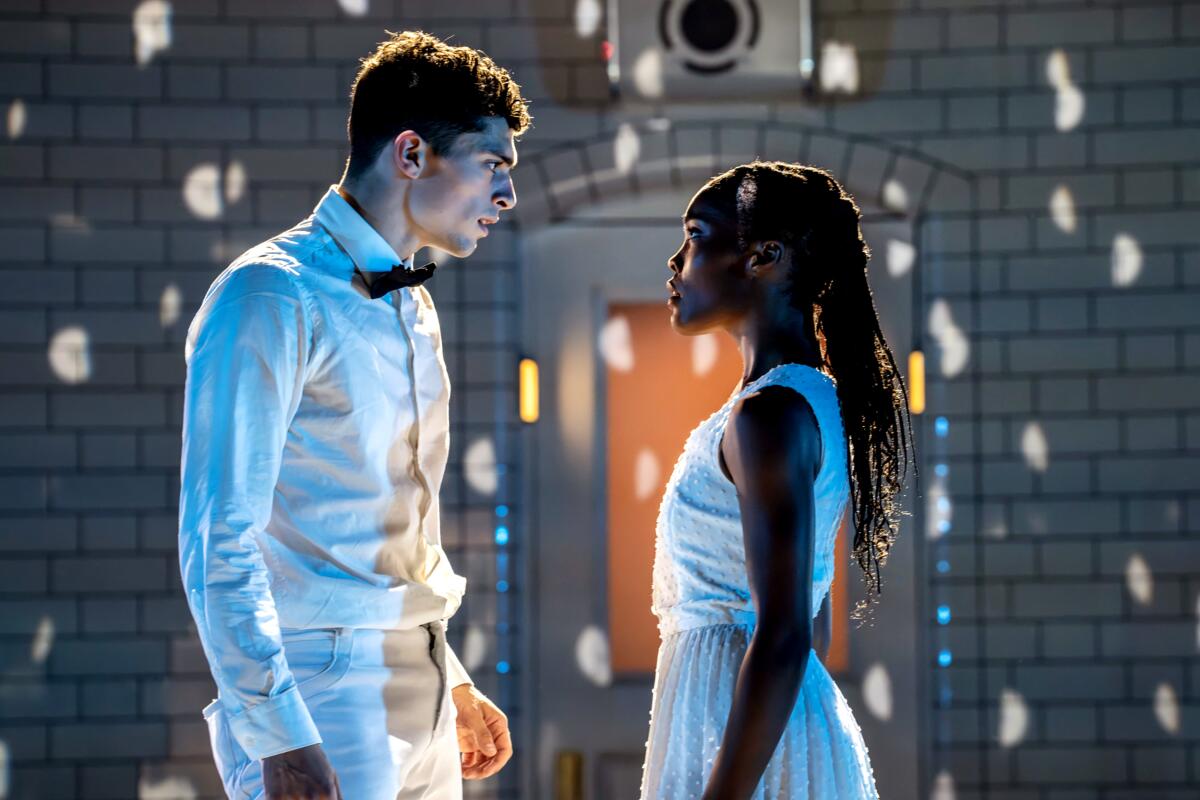
“Romeo and Juliet,” which had its North American premiere on Wednesday at the Ahmanson Theatre, combines the brooding sexual melancholy of “Spring Awakening” and the nuthouse authoritarianism of “One Flew Over the Cuckoo’s Nest.” Bourne, as he did to memorable effect in his version of “Swan Lake,” reworks a classic story for maximum menace. Sergei Prokofiev’s score encourages the twisted turns and foreboding touches of Bourne’s imagination.
The set and costumes by Lez Brotherston create a blizzard of institutional white. Tiled walls with built-in ladders conjure an ominous gymnasium, where accidents are meant to happen. An upper level walkway serves as a balcony but worryingly offers itself up as a suicide perch.
Prison bars make clear that freedom is limited and conditional. Participation in the daily routine — morning calisthenics, medical check-ins, recreational hour — isn’t optional. The residents here are inmates, their lives controlled by a medical staff whose orders are enforced by guards.
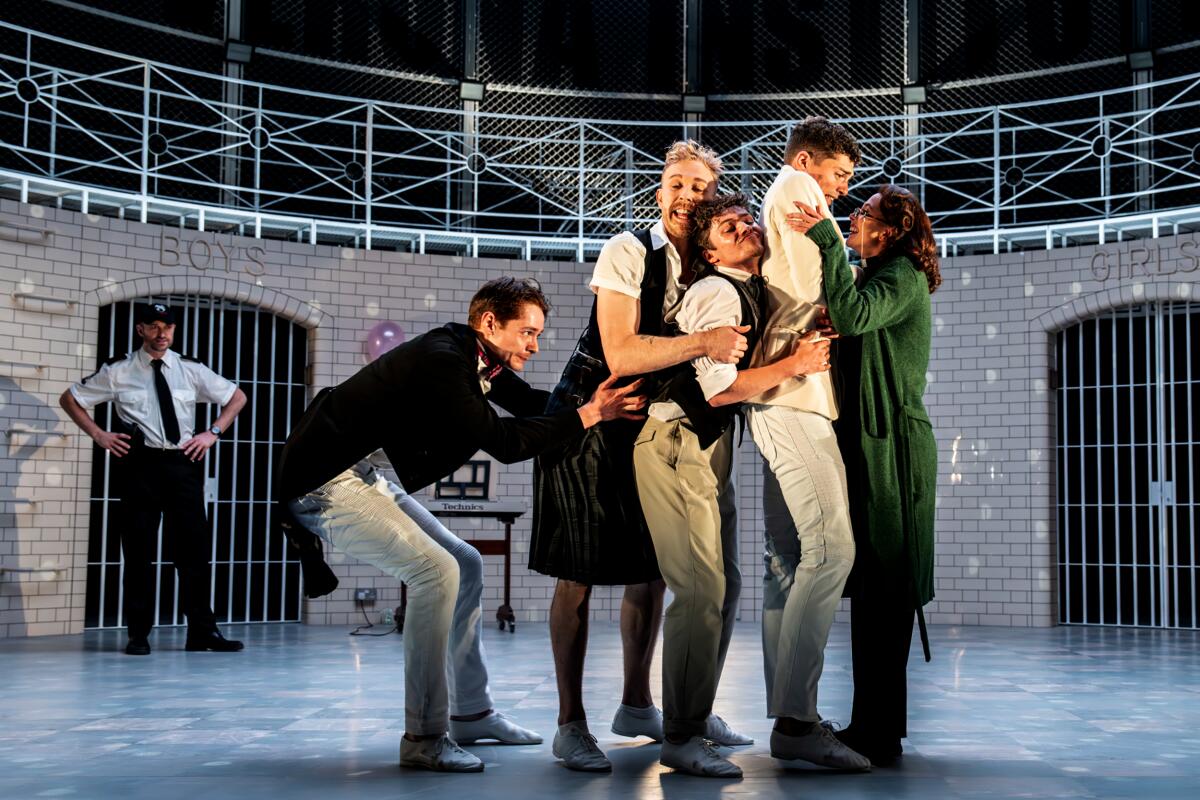
Romeo is dropped off by his parents, who seem eager to relinquish all responsibility for their troubled boy. Father and mother act like demagogue politicians, waving at crowds from balconies while relieving themselves of the burden of their impossible son. (The youth in this adaptation are victims of a nonchalant fascism rather than a blood feud.)
Dressed at first in preppy clothes, Romeo (Paris Fitzpatrick at the reviewed performance) is initiated by a group of resident boys before even his paperwork is completed. They strip him, leaving him shivering in his skivvies before donning him in the institute’s requisite ghostly attire.
Romeo has no choice but to play along. The exposure of his flesh embarrasses him. But he’s being welcomed into a band of Lost Boys, gay and straight alike, who find solidarity in their state of rejection.
The scene pulses with athletic jocularity, good-spirited fun with an edge of danger. The earlier ensemble dance sequences laying out the rituals of the Verona Institute are a bit muddled. Bourne’s choreography here is more striking in smaller groupings.
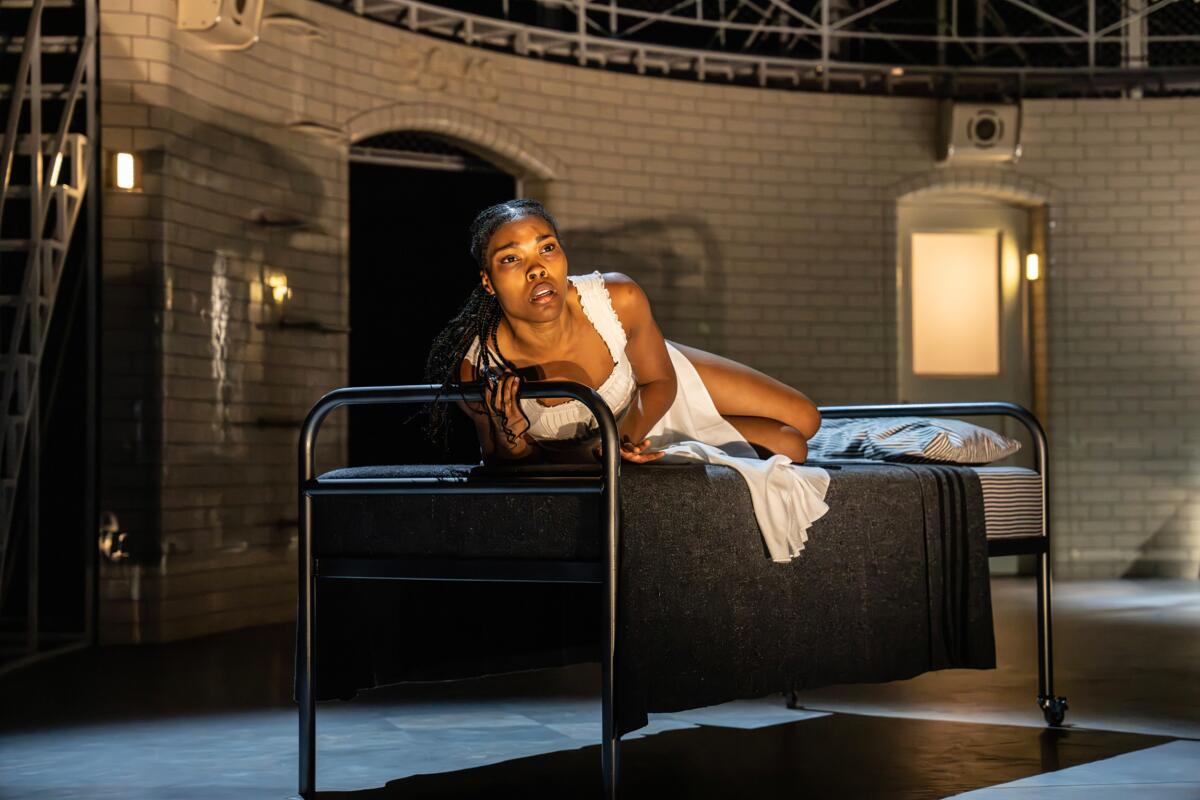
Juliet (performed by Monique Jonas on opening night) immediately seizes his attention. Unfortunately, she’s already activated the predatory interest of Tybalt (Adam Galbraith assumed the role on Wednesday), a Bluto-like guard with an unsavory interest in underage girls.
Shakespeare’s tragedy is rearranged in a way that rebuffs careful inspection. When Bourne clarifies his story line, the production turns melodramatic, cheesily so on occasion. Villainous Tybalt is a pantomime baddie. Rev. Bernadette Laurence (Daisy May Kemp had the honors at opening night), a go-between for the young lovers, is a hapless goodie.
Best to relieve yourself of textual worries and bask in the fraught lyricism. The balcony scene, following a soiree at the institute designed to let the residents dress up and blow off some steam, is moodily reimagined. If the moment-to-moment meaning of the scene sometimes requires guesswork, the love story at the heart of the tale is achingly clear.
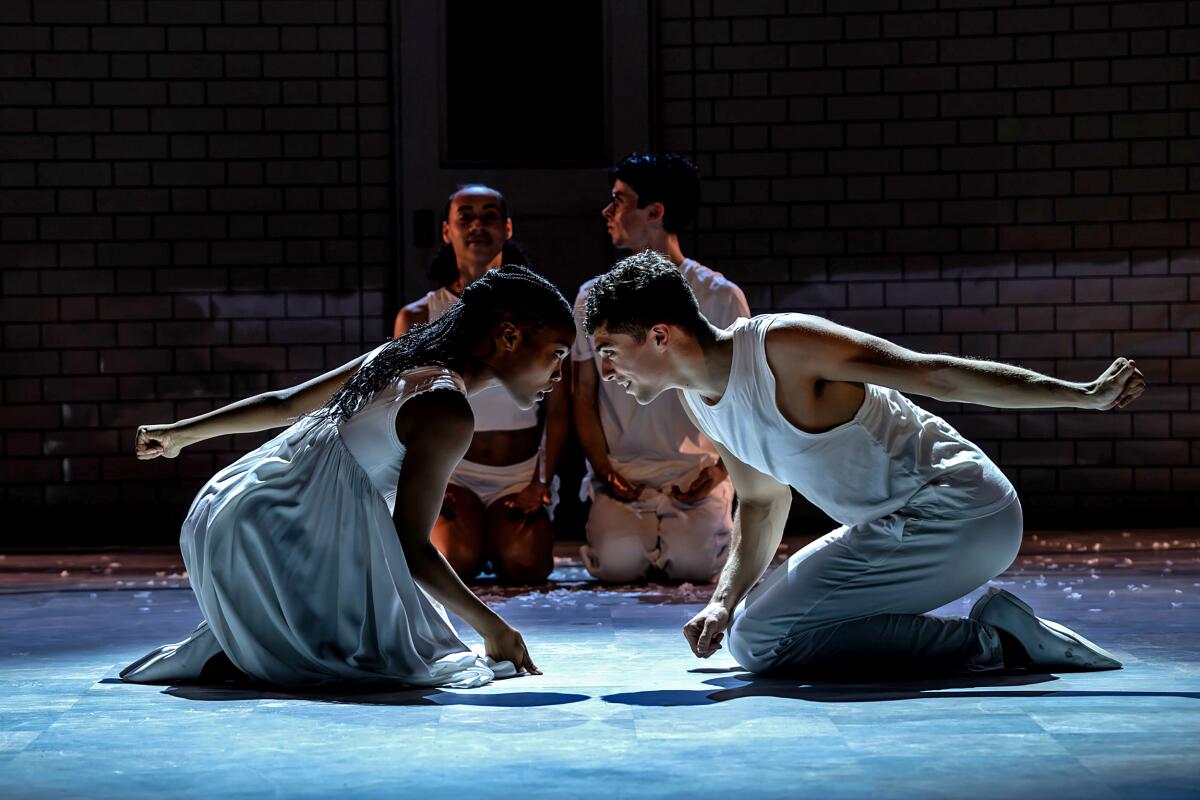
Romeo and Juliet are conquered by their mutual ardor, writhing in a pleasure that in the absence of the beloved turns immediately into pain. Desire is borne by them like an affliction.
The somber intensity of romance brings out the best of Bourne. The dancers droop and drag when they’re alone, anxiously turning in on themselves as though they might like to disappear entirely. Reunited, they are restored to life, magnetized into ecstasy, determined to do everything humanly possible to merge into a single organism.
Although they are young, time isn’t on their side, so they race to catch a fleeting glimpse of what is too pure to endure. Bodies contort into poetry. Fitzpatrick and Jonas bring emotional grace to Romeo and Juliet’s ruin. The revised ending narrows the tragedy. Shakespeare knew better, but a sizable portion of the pathos is renewed in Bourne’s vocabulary of stylized torment.
'Matthew Bourne’s Romeo and Juliet’
Where: Ahmanson Theatre, 135 N. Grand Ave., L.A.
When: 8 p.m. Tuesdays-Fridays, 2 and 8 p.m. Saturdays, 1 and 6:30 p.m. Sundays. (Check for exceptions.) Ends Feb. 25.
Tickets: Start at $35
Information: (213) 628-2772 or CenterTheatreGroup.org
Running time: 2 hours, including intermission
More to Read
The biggest entertainment stories
Get our big stories about Hollywood, film, television, music, arts, culture and more right in your inbox as soon as they publish.
You may occasionally receive promotional content from the Los Angeles Times.


